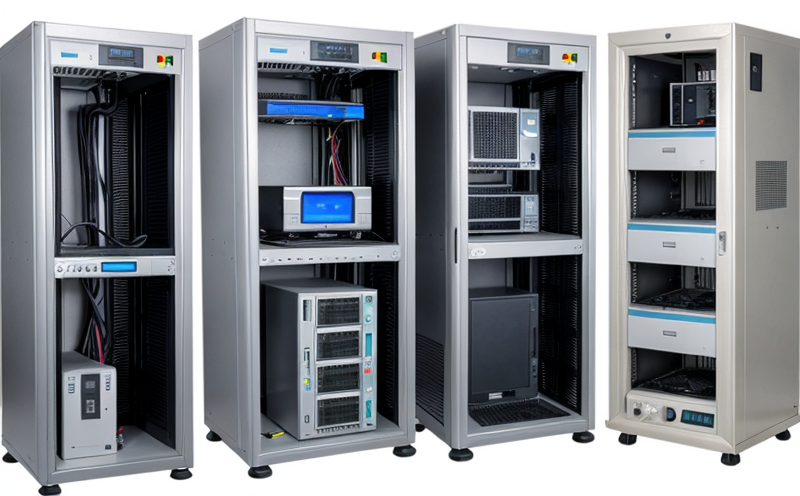IEC 61000 4-5 Surge Immunity Testing for Telecom Equipment
The International Electrotechnical Commission (IEC) standard 61000-4-5 provides essential guidelines for ensuring the robustness and reliability of telecommunications equipment, particularly in environments where electrical surges are a concern. This surge immunity test assesses how well telecom devices withstand transient overvoltages that can disrupt their operation or cause damage.
The standard is critical for manufacturers to ensure their products meet global quality and safety requirements. Telecom equipment—ranging from base stations, switches, routers, and servers—operates in diverse environments where electrical disturbances are common. These include power grid fluctuations, lightning strikes, and electromagnetic interference (EMI). Surge immunity testing helps identify potential vulnerabilities that could impact performance or cause failures.
Compliance with IEC 61000-4-5 is mandatory for telecom equipment used in critical infrastructure such as telecommunications networks, data centers, and mobile networks. This ensures interoperability, reliability, and safety across various regions that adhere to these standards.
The testing process involves subjecting the telecom device under test (TUT) to a series of controlled voltage surges at specific frequencies. The purpose is to evaluate how well the equipment can maintain its functional integrity during exposure to these transient overvoltages. Key parameters include voltage levels, rise times, and repetition rates.
During the test, engineers monitor various performance metrics including signal strength, data throughput, error rates, and device operation stability. These metrics are crucial for understanding how well the equipment performs under real-world conditions where transient disturbances can occur frequently.
To prepare for testing, telecom manufacturers must ensure that their devices meet basic design criteria such as proper grounding, appropriate filtering, and robust power supply designs. The TUT should also be configured with all necessary interfaces active to simulate actual operational use cases.
The test setup typically includes a transient generator capable of producing controlled surges within the specified frequency range. This equipment must accurately replicate real-world scenarios that could challenge the device's surge immunity capabilities. Additionally, environmental factors such as temperature and humidity may need to be carefully controlled during testing to ensure consistent results.
Upon completion of the test, detailed reports are generated summarizing performance metrics and identifying any issues encountered. Compliance with IEC 61000-4-5 ensures that telecom equipment can operate reliably in challenging environments while maintaining high standards of quality and safety.
In summary, IEC 61000-4-5 surge immunity testing is an essential step in the development and certification process for telecommunications equipment. It provides valuable insights into device performance under transient overvoltage conditions, ensuring robustness and reliability across diverse operational environments.
Applied Standards
The IEC 61000-4-5 standard is widely recognized as the gold standard for surge immunity testing in telecommunications equipment. It aligns with other relevant international standards such as:
- IEEE C62.x Series: Provides additional guidelines on transient phenomena and their effects.
- ANSI/IEEE C65.4-1987: Focuses specifically on overvoltage protective devices.
- ETSI TS 103 285: Ensures compatibility with European regulatory requirements.
The harmonization of these standards ensures a consistent approach to surge immunity testing across different regions and industries, promoting interoperability and reliability in telecommunications networks globally.
Customer Impact and Satisfaction
- Enhanced Reliability: Compliance with IEC 61000-4-5 significantly reduces the risk of equipment failure due to transient overvoltages, leading to more dependable telecom systems.
- Improved Quality: Rigorous testing ensures that only high-quality products reach the market, enhancing customer trust and satisfaction.
- Increased Interoperability: Adherence to international standards facilitates seamless integration of equipment across different networks and regions.
- Cost Savings: By identifying and addressing potential issues early in the development process, companies can avoid costly recalls or field repairs later on.
Customers benefit from enhanced reliability, improved quality, increased interoperability, and cost savings. These factors contribute to higher levels of customer satisfaction and loyalty.
Environmental and Sustainability Contributions
The IEC 61000-4-5 standard plays a crucial role in promoting environmental sustainability by ensuring that telecom equipment operates reliably even under harsh conditions. This reduces the need for frequent replacements or repairs, extending the lifecycle of devices and minimizing electronic waste.
By improving the robustness and reliability of telecom infrastructure, compliance with this standard supports sustainable development goals. It helps reduce energy consumption associated with repeated installations and maintenance activities while promoting the use of more efficient technologies.
In addition, IEC 61000-4-5 promotes responsible stewardship by ensuring that equipment is designed to meet stringent quality standards from inception through deployment. This approach supports a circular economy model where resources are used efficiently without unnecessary waste.





